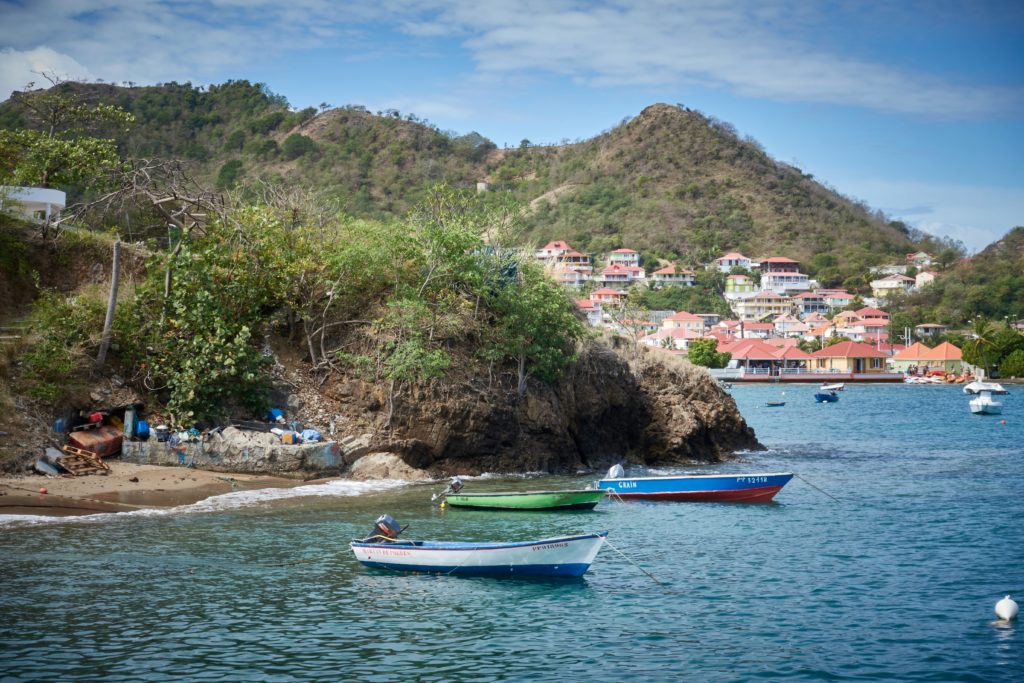Since the 19 March 1946 law, Guadeloupe has been a French overseas department. 40 cantons and 32 communes make up the department’s two districts (Basse-Terre and Pointe-à-Pitre) (respectively 17 cantons, 18 communes, and 23 cantons, 14 communes).
All national legislative texts are applicable, as they are in all overseas departments, but they may be subject to adaptations “needed by their special situation” (Art. 73 of the Constitution). There is a Departmental Council and a Regional Council in Guadeloupe.

Economy
Compared to its neighbors in the region, Guadeloupe has the advantage of a fully functional productive system, as opposed to its income-based (oil, offshore financial investments) or polarized economies (tourism).
Agriculture
The agricultural industry, whose primary crops are bananas and sugar rum, is the foundation of Guadeloupe’s economy.
The largest export, in terms of volume, is still bananas. The harvest of 40,181 tonnes in 2007 represents a decrease in production, particularly as a result of the damage from cyclone DEAN. Also as a result of the lengthy reduction in production (reduction of 2,340 hectares in 2007, reform of the Common Organization of Markets (CMO) for bananas, and further sector transformation).
Sugar cane cultivation is the second-largest agricultural endeavor. The second-largest local production is sugar. To generate 63,450 tonnes of sugar in 2008, two facilities (Gardel in Grande-Terre and Grande-Anse in Marie-Galante) crushed roughly 690,000 tonnes of sugar cane. The sector does, however, confront significant obstacles that will affect its future. Since 2009, due to concerns from significant worldwide sugar producers, the reference price for sugar has had to decrease by 36% to comply with the WTO judgment.
The breeding
Only 11.9% of the predicted 26,557 tonnes of local meat consumption is satisfied by livestock. The pipeline’s results, though, are promising. Controlled meat slaughterings rose by 15.9% in 2007. ( 2,880 tonnes).
- With 74,461 head, the cattle herd led all others in 2007;
- the goat herd came in second with 21,30;
- the swineherd came in third with 14,730; and
- the sheep herd came in last with less than 1,600.
There were around 300,000 chickens raised.
Fishing
The Food and Agriculture Organization (FAO) predicts that over the previous ten years, Guadeloupe’s fish production has increased by more than 20%. The output of crustaceans has remained steady, and this development is primarily attributable to the growth of marine fisheries. While local production reached over 10,000 tonnes in 2007, despite this rise, aquaculture and fisheries are still unable to meet the needs of the predicted 15,500 tonnes of local consumption. 6,500 jobs are reflected by this.
Industry and crafts
Even in more established industries like sugar and rum, the businesses that make up Guadeloupe’s industrial fabric are relatively new in terms of their existing legal arrangements. Local investors typically hold their capital. According to INSEE, the industrial sector contributed 6.9% of jobs and 5.4% of the department’s overall value added in 2006 (down from 6.5% in 1993). Its development was somewhat influenced by the rules against tax evasion.
There are 12 industrial zones in Guadeloupe, totaling 463.8 hectares over the entire island. The majority of activities in the Pointoise agglomeration are concentrated in the Euro-Caribbean complex of activities (ECSC), which includes autonomous ports, the international trade area, and the World Trade Center. It is situated on the Jarry site (325 hectares), which is part of the Baie-Mahault commune. 80% of new jobs created in the last ten years have come from this industrial sector, which is one of France’s first three industrial zones.
Tourism
Up until the year 2000, 5% of the department’s value added was produced by hotels and restaurants. Since then, the industry has been experiencing a severe crisis that has resulted in the closure of rooms in both classified and unclassified hotels. Also, a decline in airport traffic between 2000 and 2005, and other manifestations. In 2006, it barely contributed 3.6% to the value-added production of Guadeloupe.







